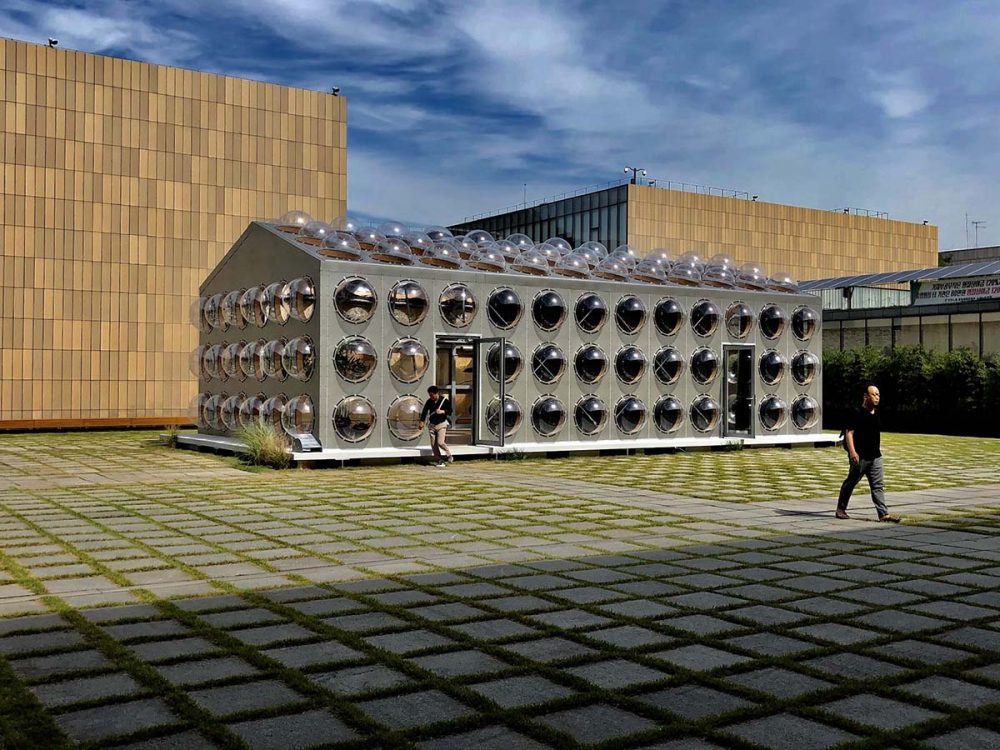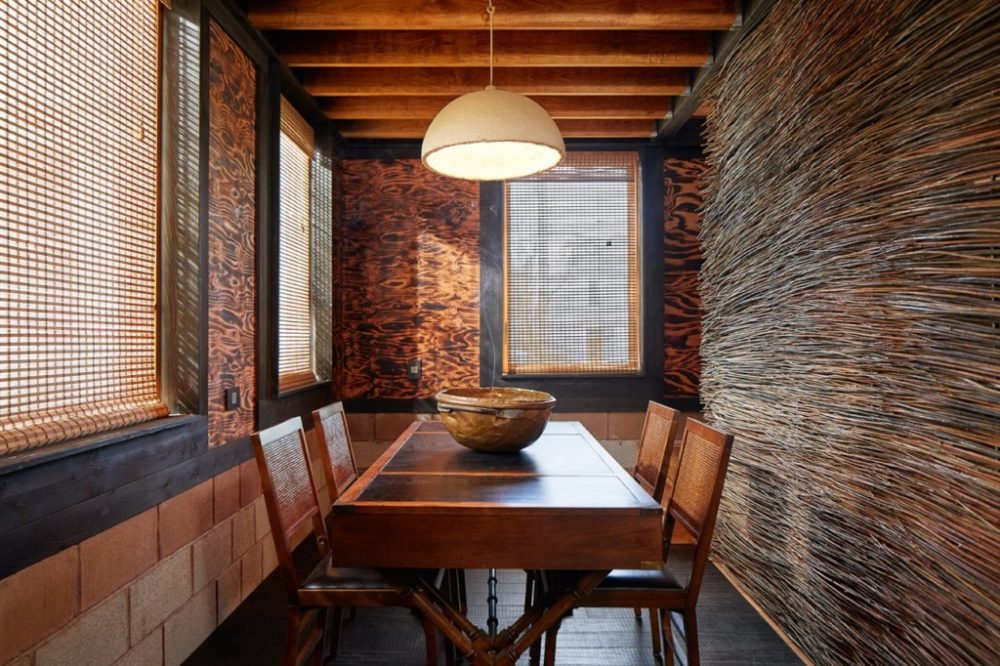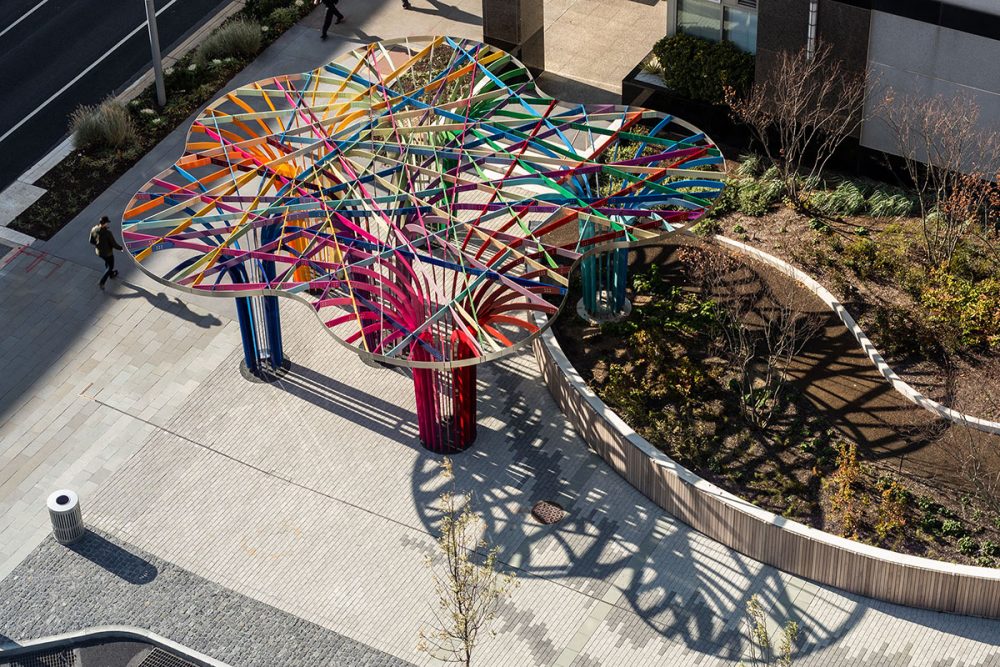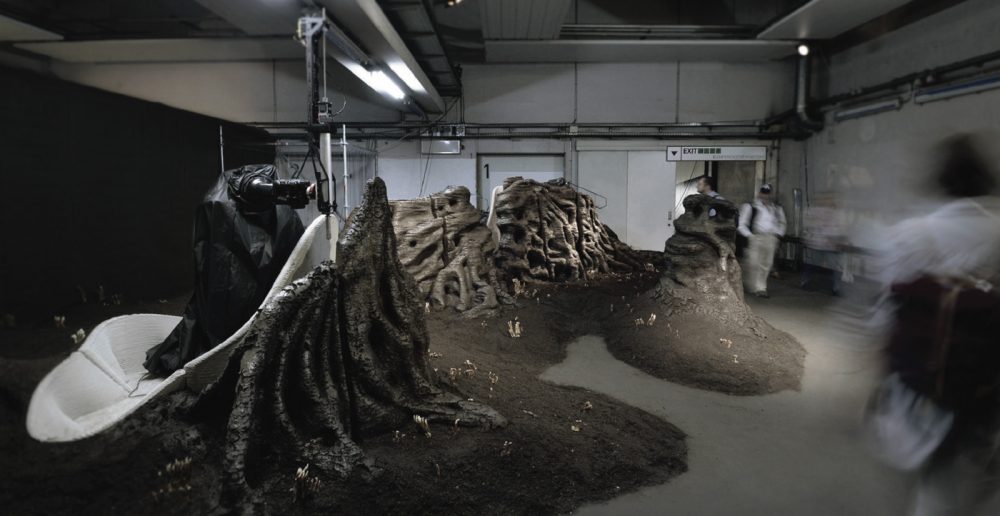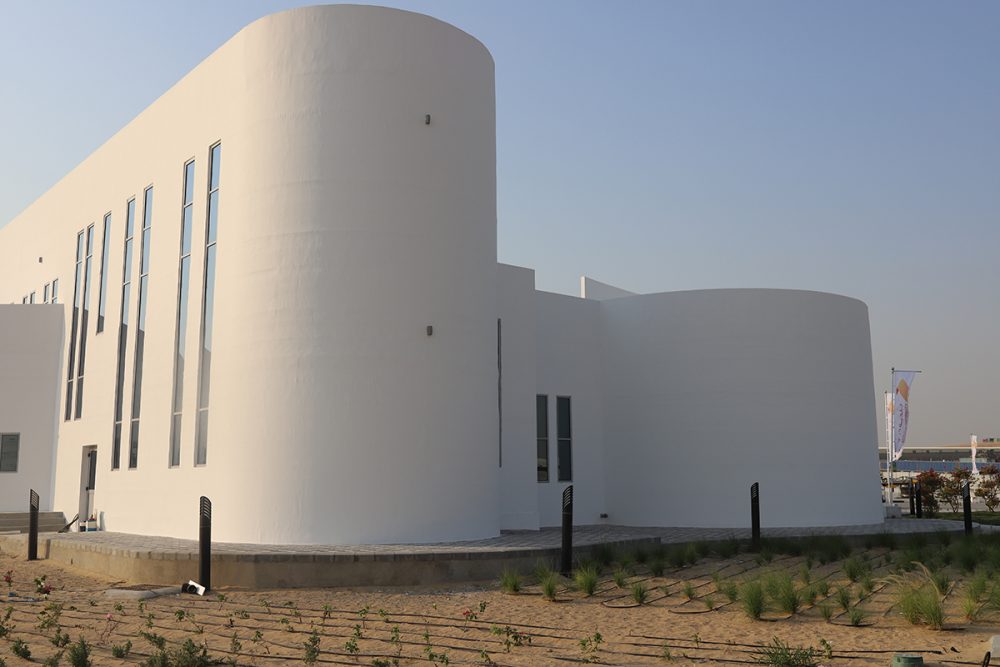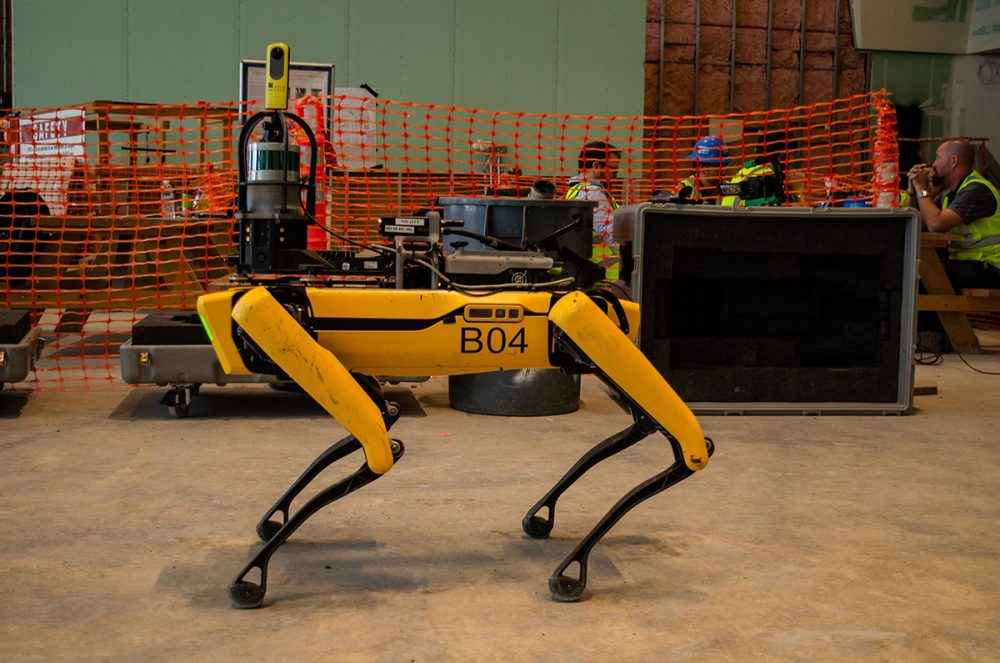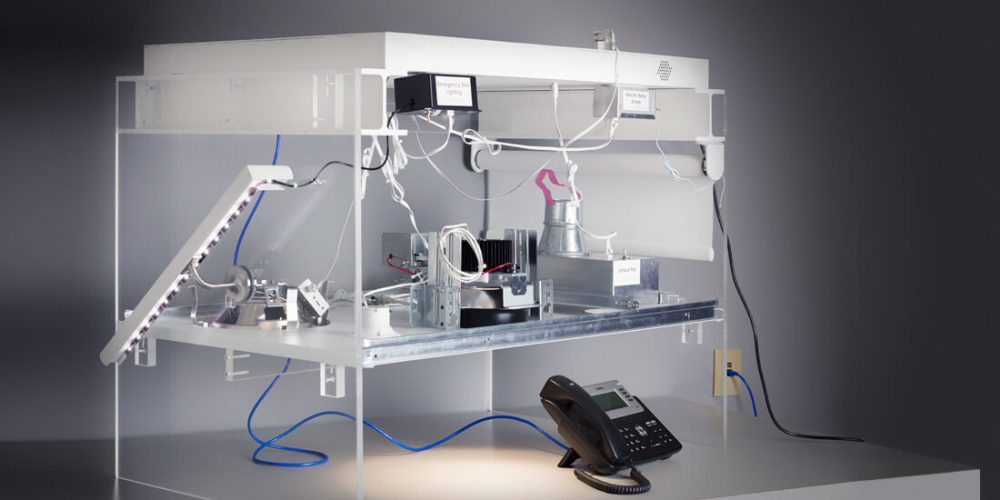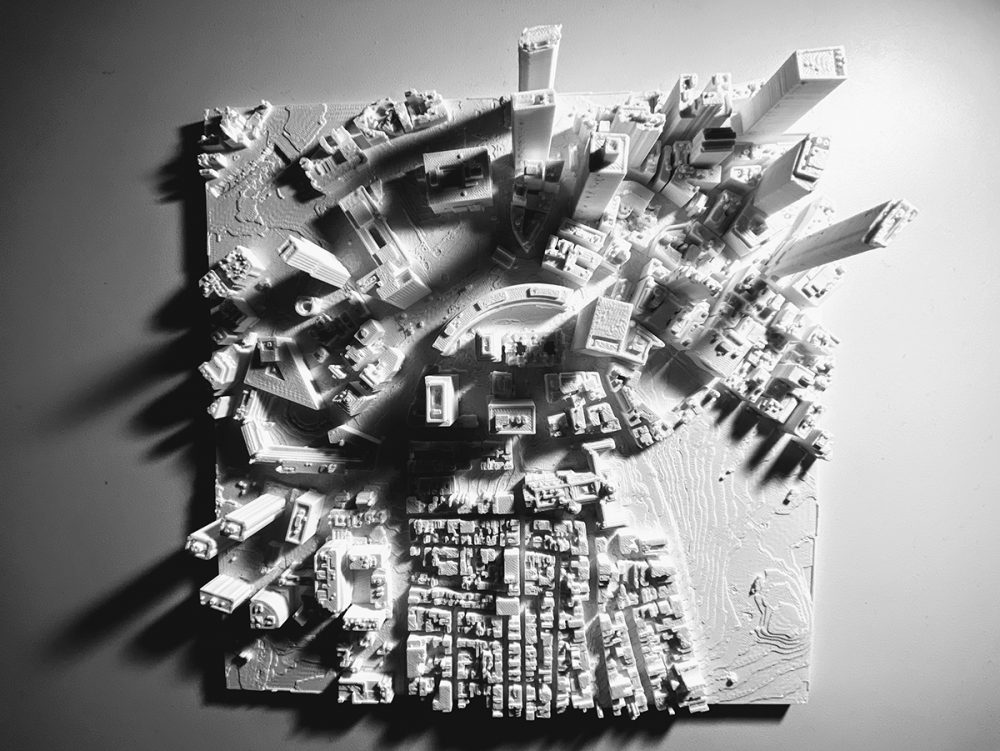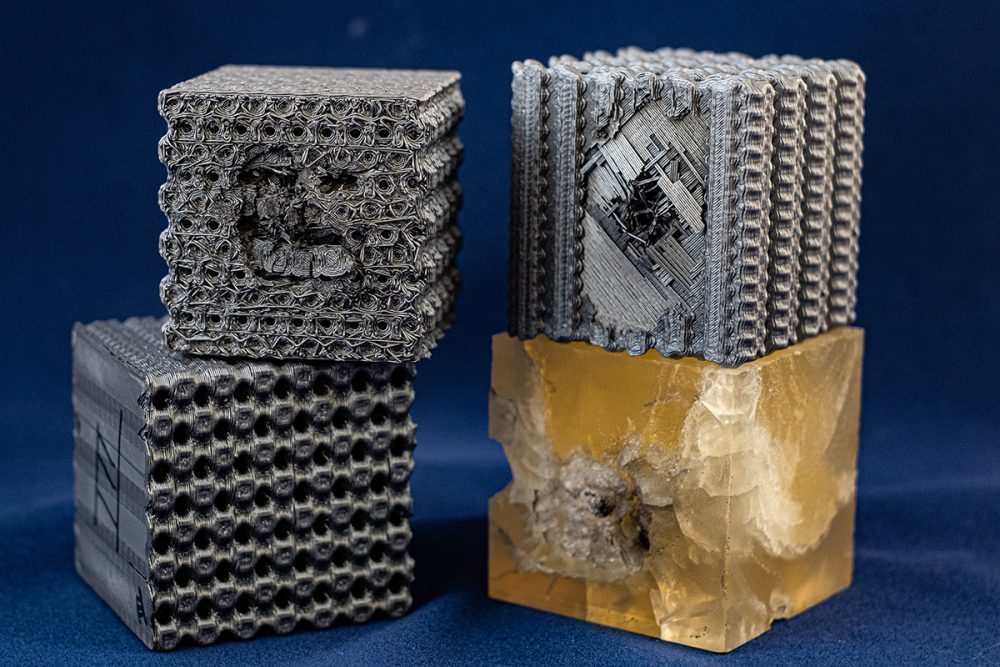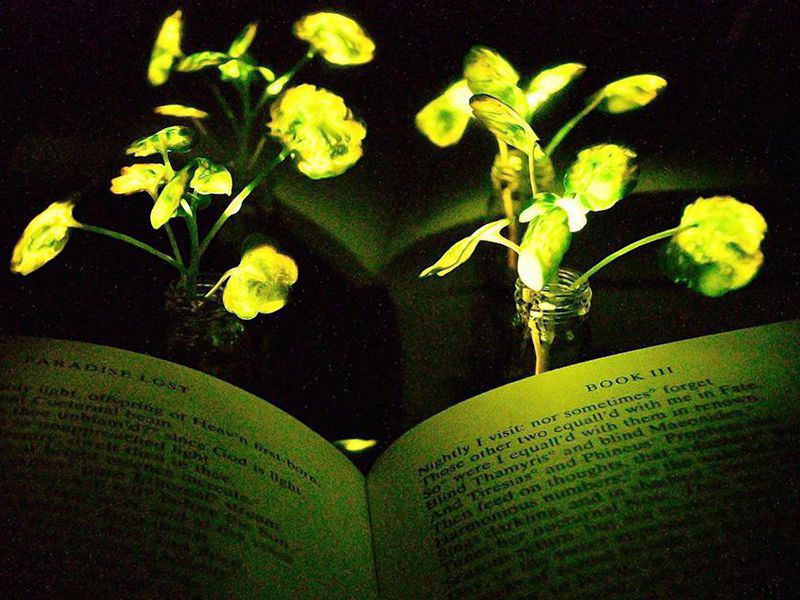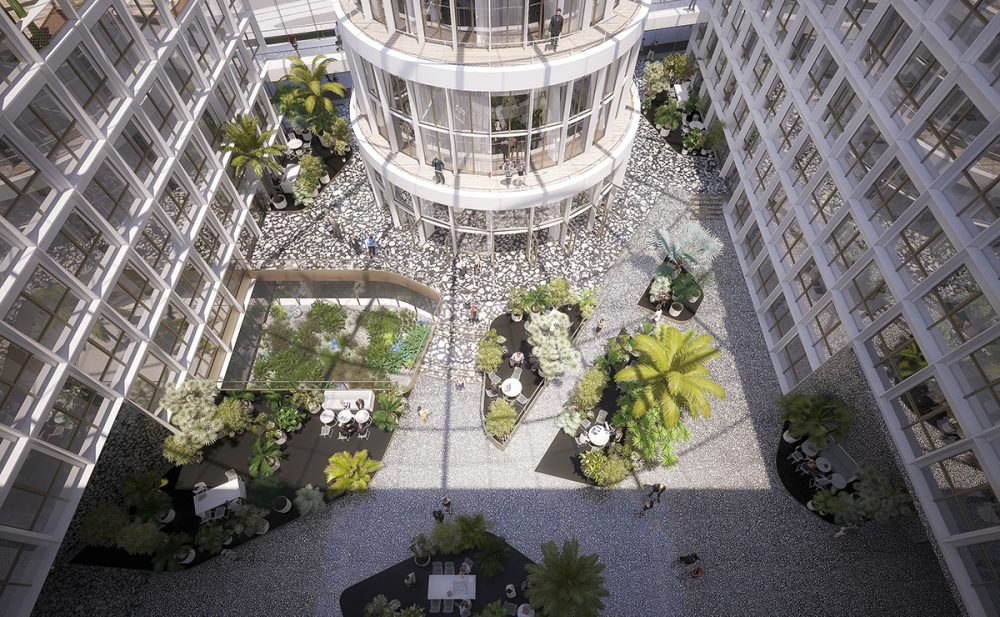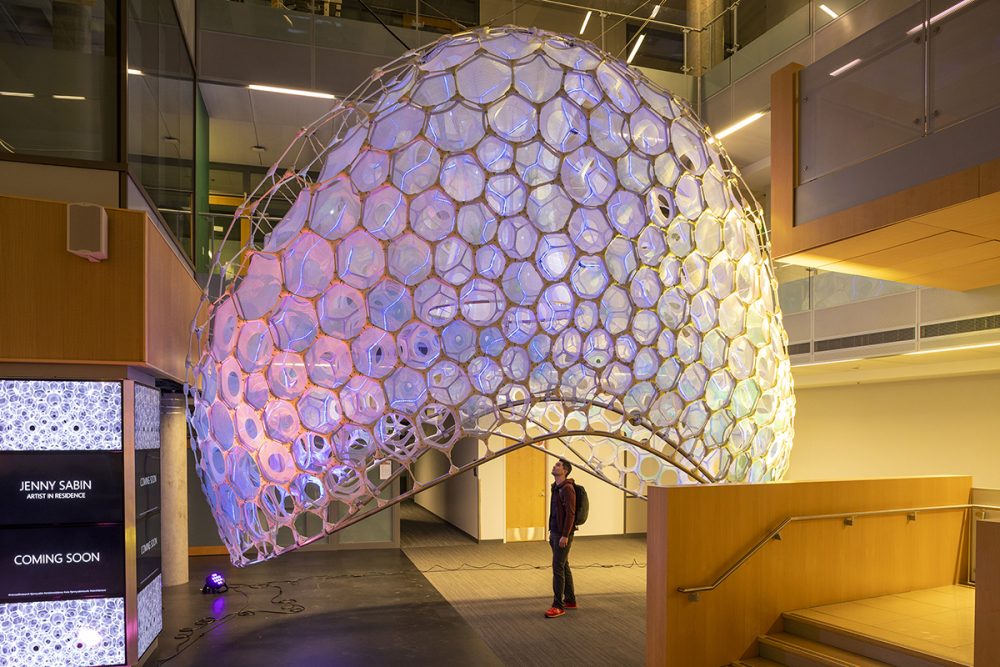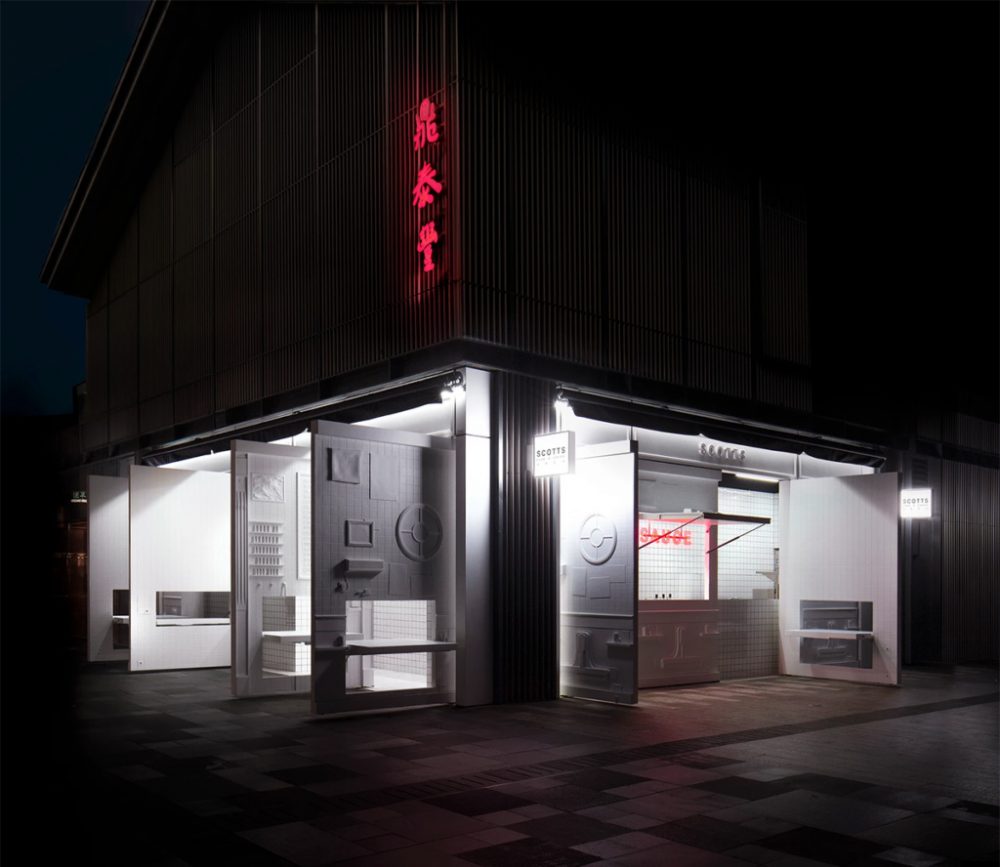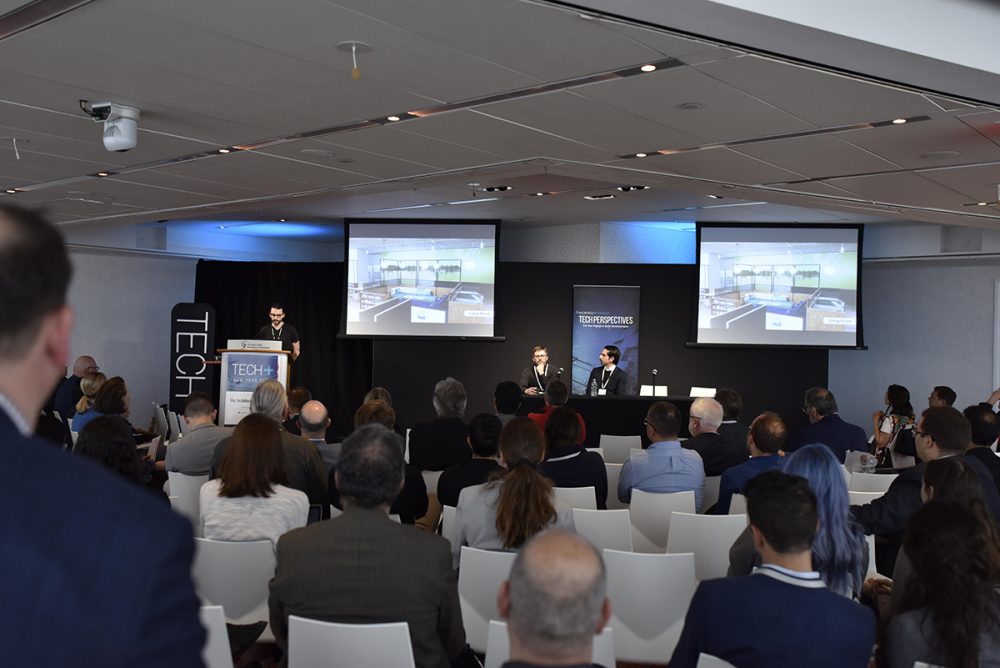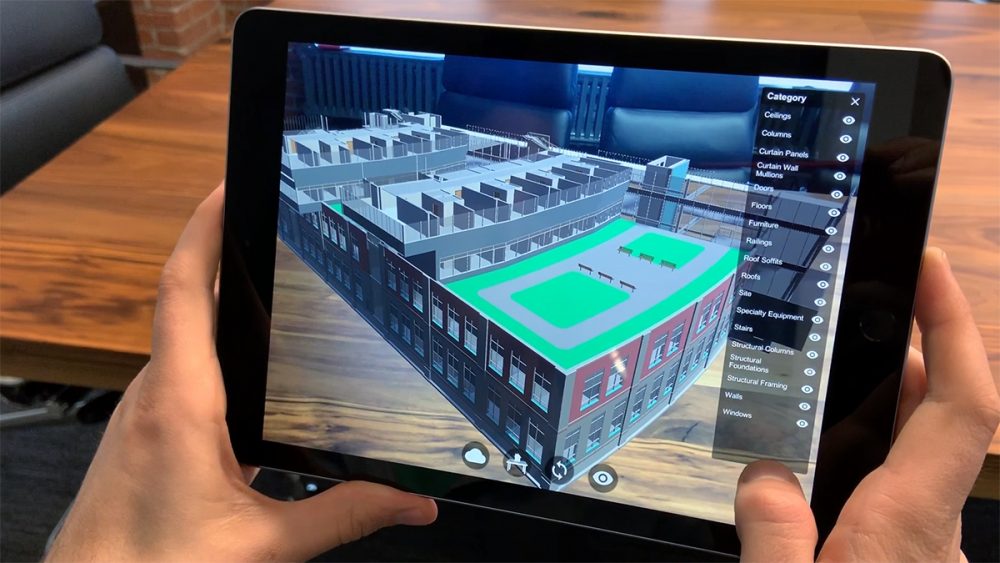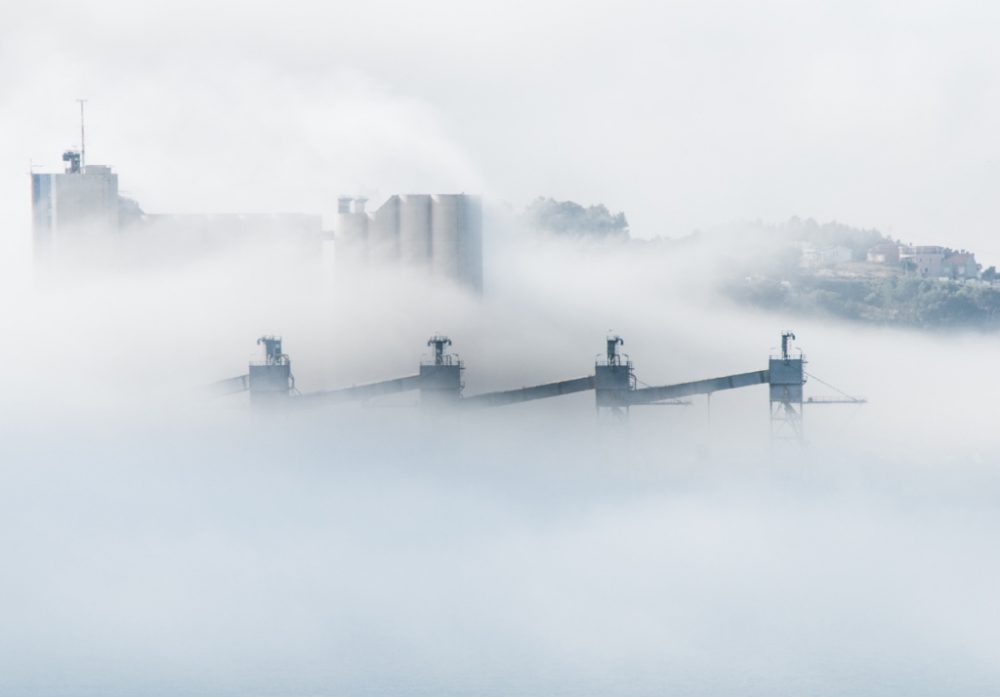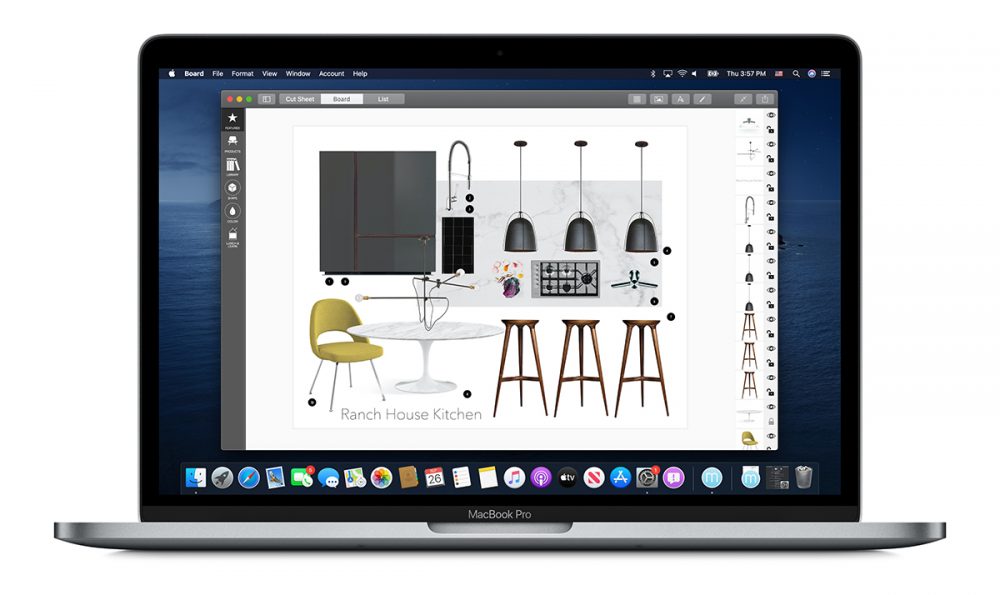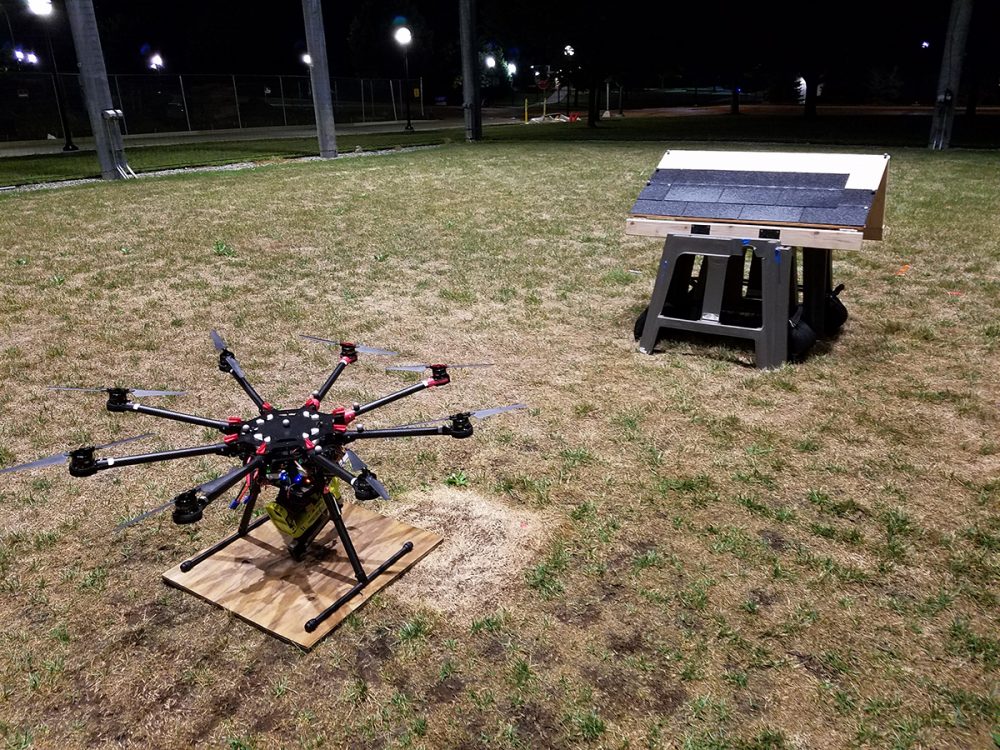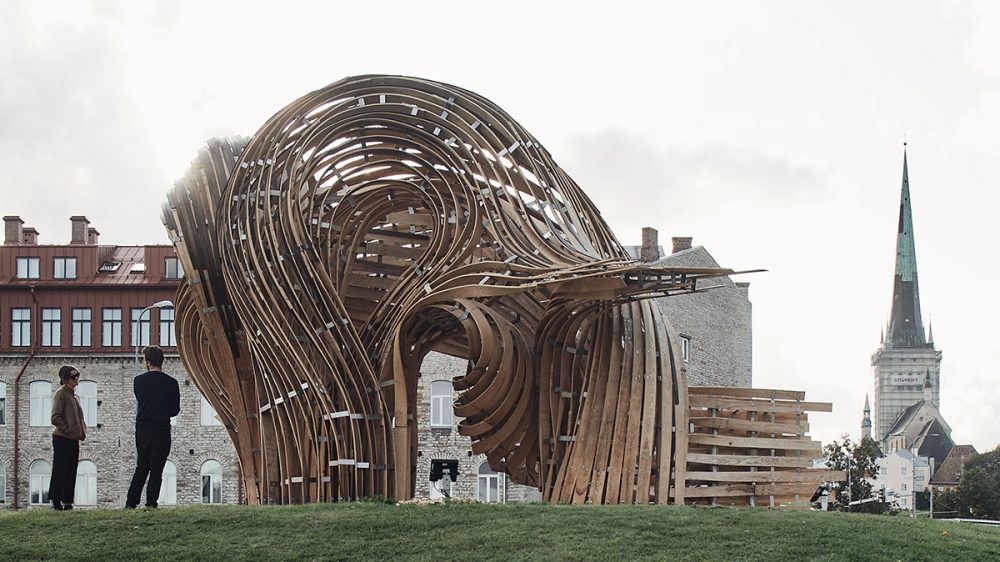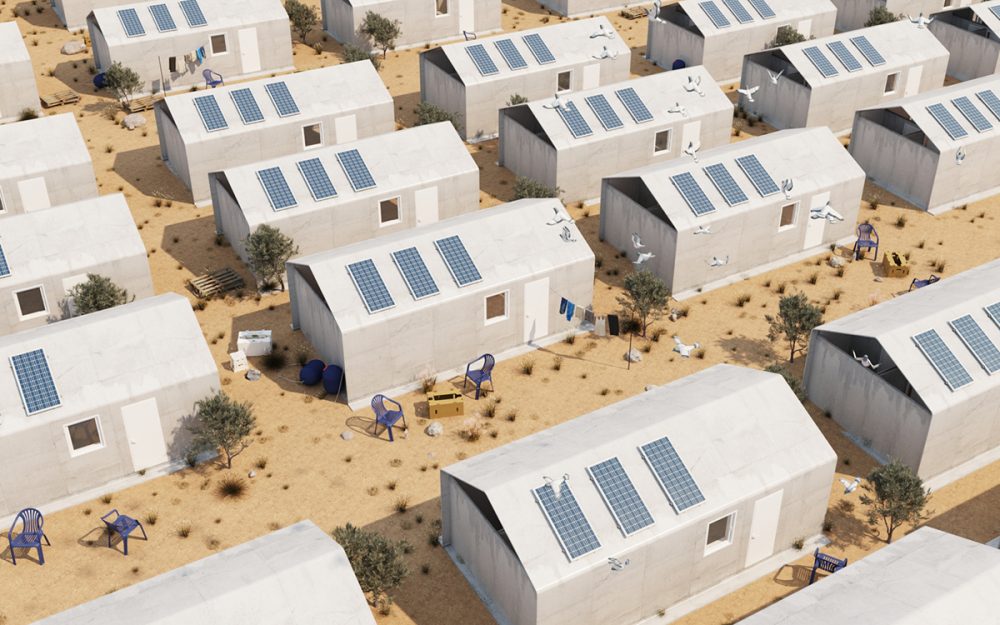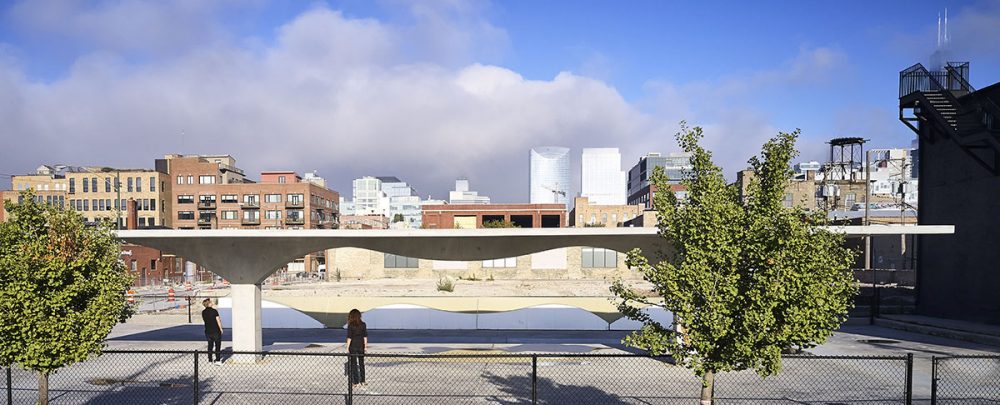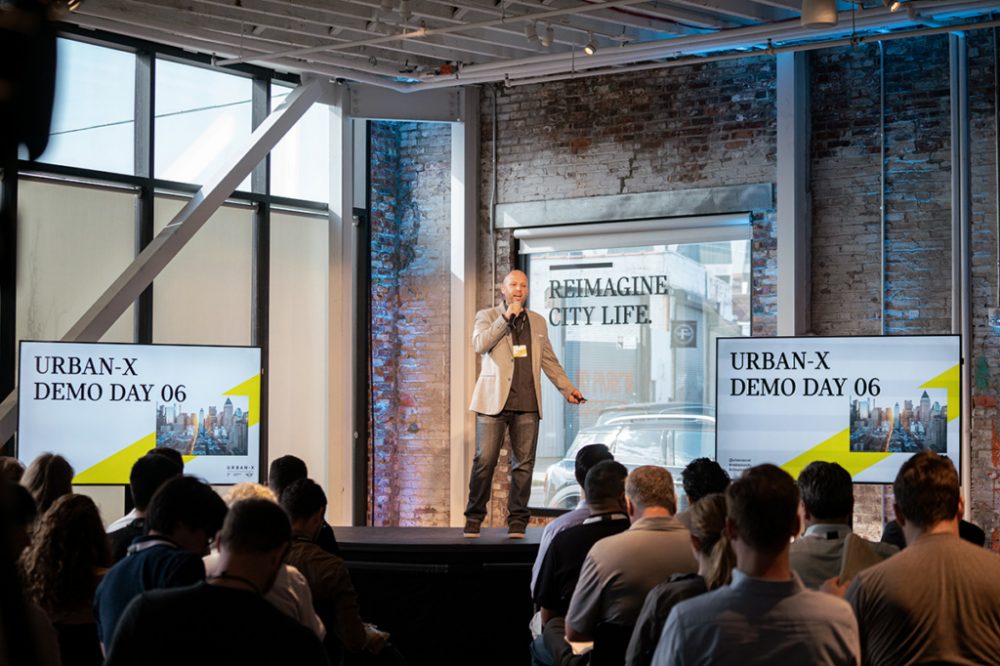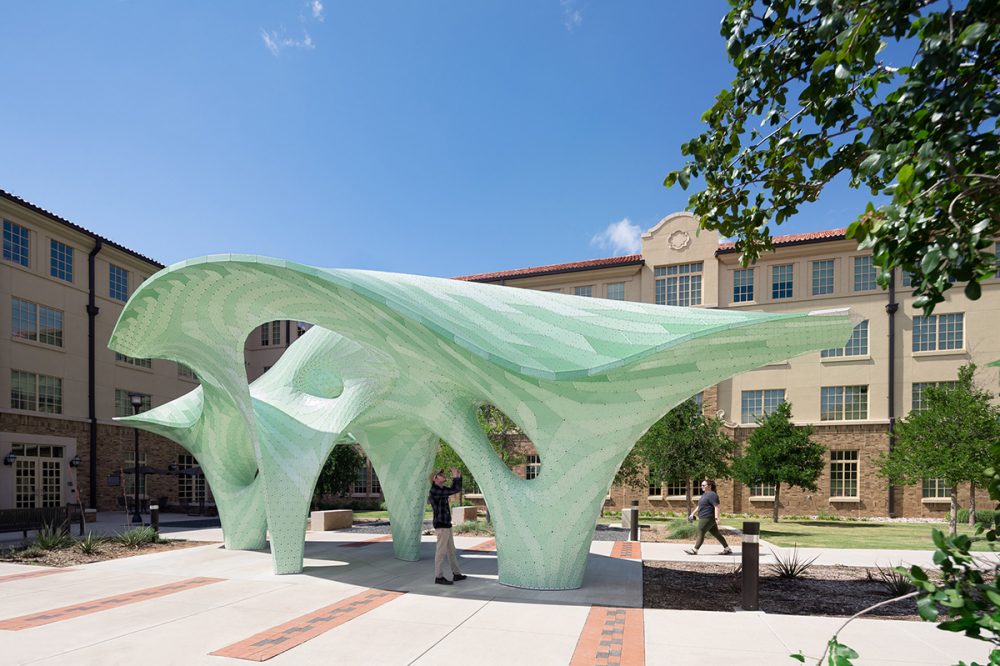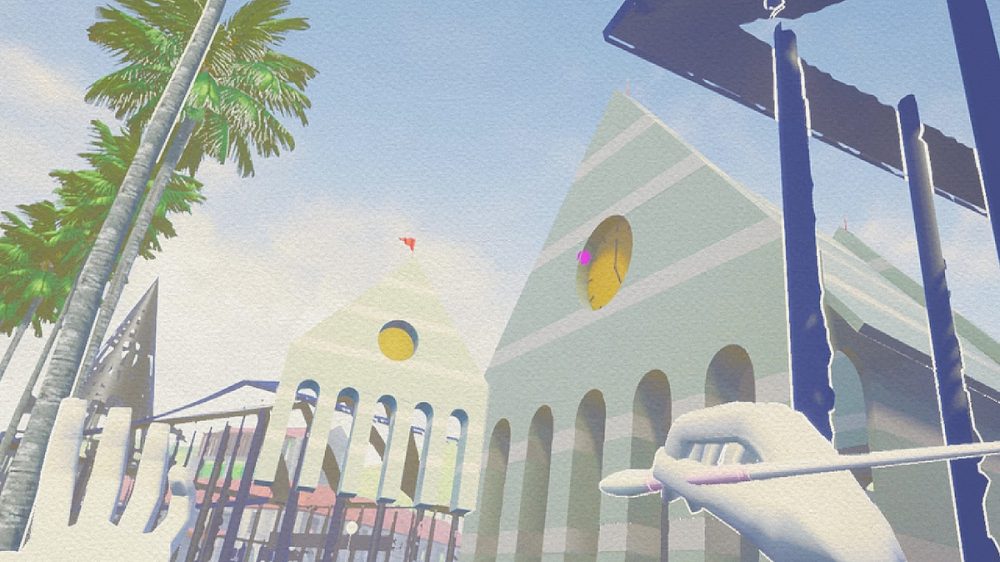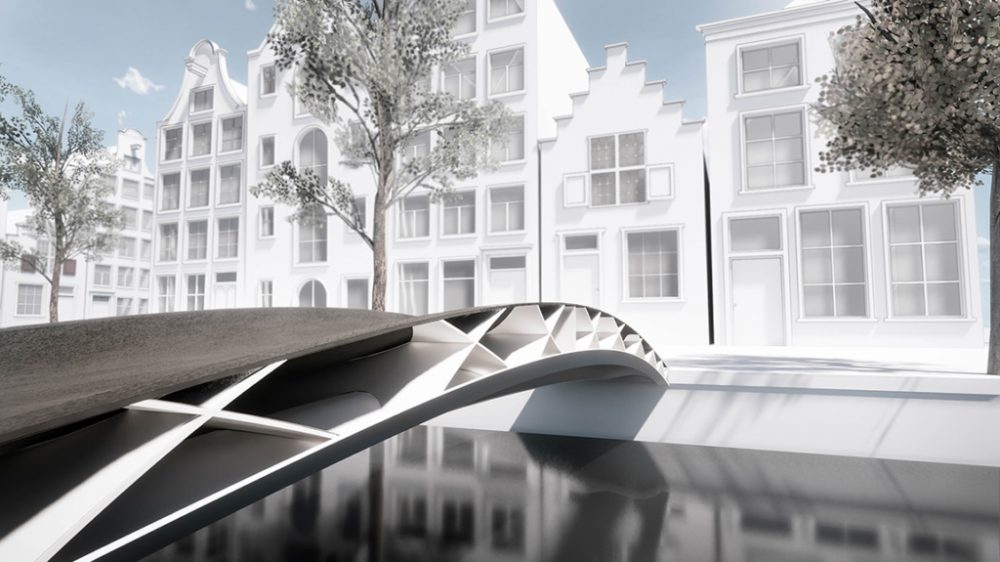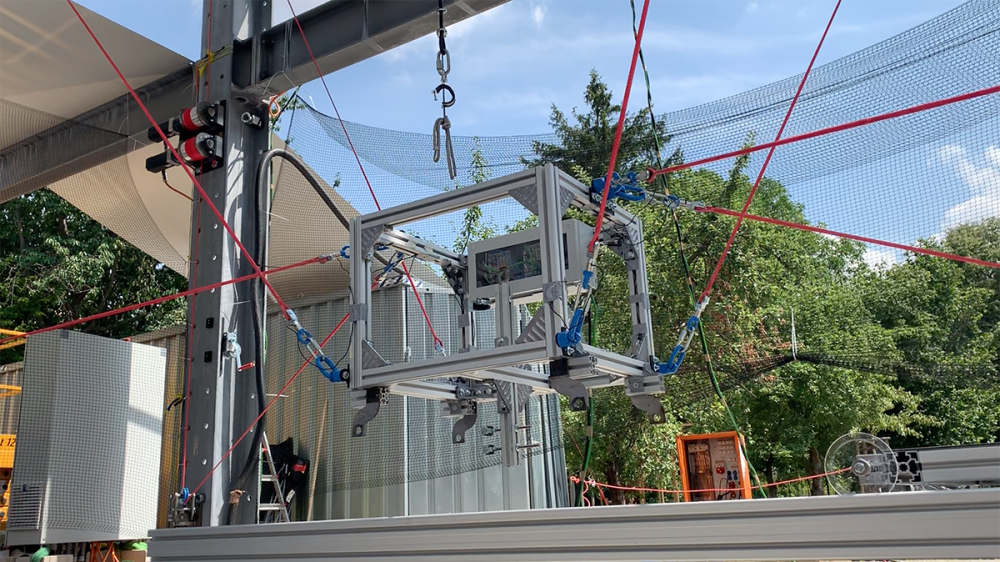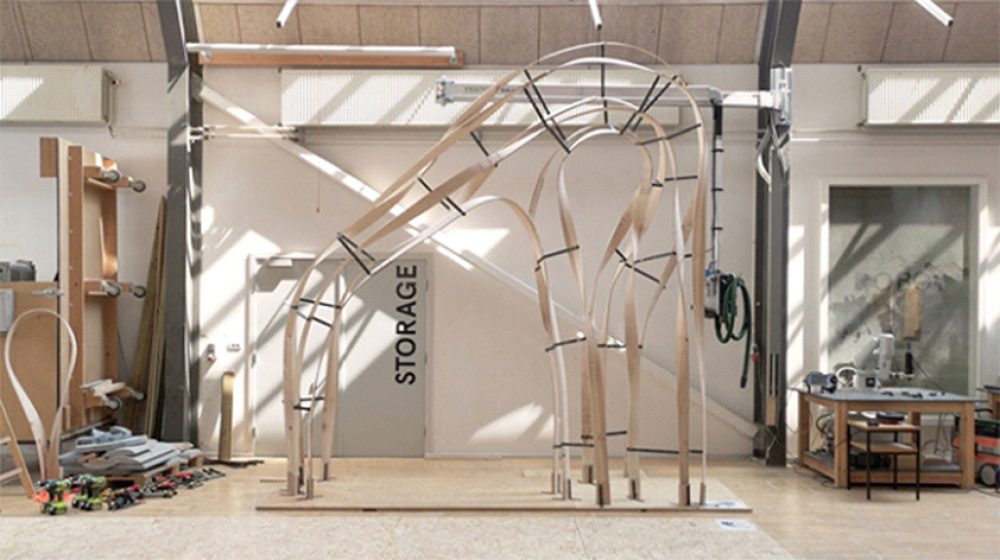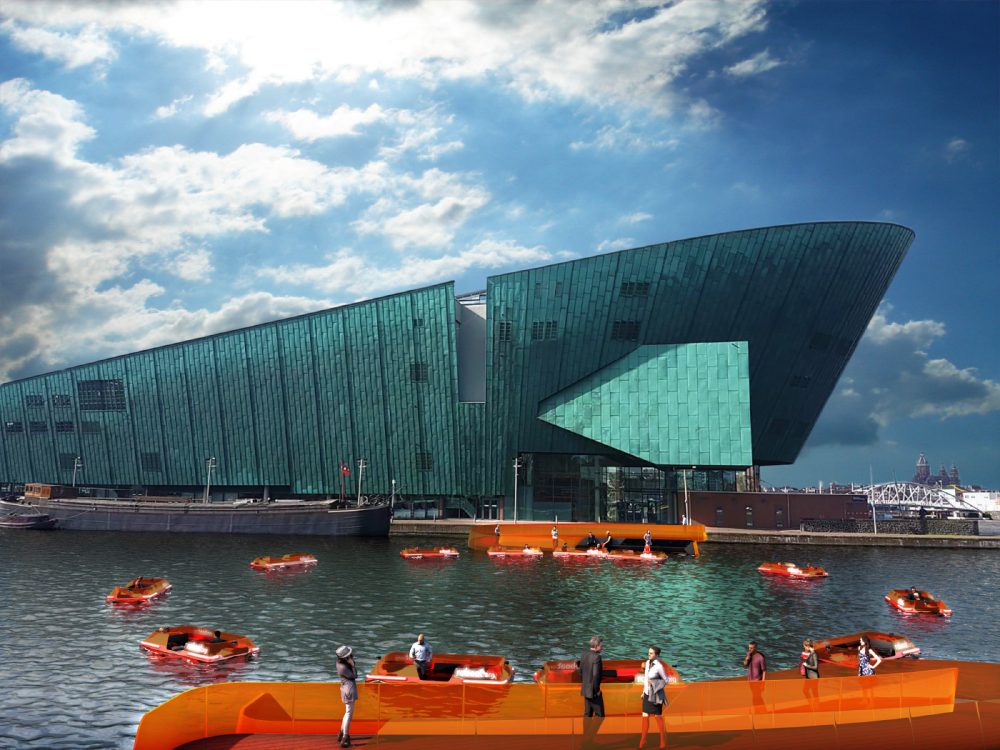The New York and Seoul–based Obra Architects, along with Front Inc., Obra Abrim, Dongsimwon Landscape, and Supermass Studio, have created an oasis of “perpetual spring” in a public courtyard in Seoul. Supported by Korea’s National Museum of Modern and Contemporary Art as part of their exhibition The Square: Art and Society, the experimental pavilion features
The Architect’s Newspaper has granted its 2019 Best in Design Awards to a number of standout projects, with the TWA Hotel refresh coming out on top as the Building of the Year. AN also recognized the best uses of innovative materials, digital fabrication, and other tech-forward AEC innovations this past year. In Research, LAMAS’s Delirious
In West Philadelphia, SOFTlab has realized a six-pillar installation called Spectral Grove. The fanning canopy was realized with the help of three custom computational solutions. Made of powder-coated aluminum, the interlocking metal fins direct light and shadow throughout the day for an animated visual effect. Getting the angles of the canopy just right proved particularly
“There’s so much modern and contemporary art that isn’t shown,” the mononymous artist Damjanski said as we walked around the fifth-floor galleries of MoMA, iPhones in hand. “What if we could bring even more in?” Along with Monique Baltzer and David Lobser, Damjanski has come up with a solution to these limitations with MoMAR, an
The presentations and activities at this year’s ACADIA (Association for Computer Aided Design in Architecture) conference gave attendees a glimpse of potentially disruptive technologies and workflows for computational architectural production. The conference was held this year in Austin from October 12 through 14 and was organized by The University of Texas School of Architecture faculty members Kory Bieg, Danelle Briscoe, and
Dubai is now home to what is claimed to be the world’s largest on-site 3D-printed building. The 31-foot-tall, two-story government agency was printed in on-site three weeks using a single printer developed by the Boston-based Apis Cor, which has previously garnered attention for their sub-$10,000 printed home and for winning NASA’s 3D-Printed Habitat Challenge along
Reality capture has revolutionized construction by increasing job site efficiency and safety and allowing for quick responses to design and building challenges. However, save for the use of drones, often operated by humans, on-the-ground monitoring has required the relatively traditional (and labor-intensive) task of walking around and taking photos and collecting data to feed into
A collaboration of Canadian companies led by Toronto’s WZMH Architects has developed an award-winning prefabricated panel that could make buildings smarter and more efficient. The prefab Intelligent Structural Panels are made of two steel plates, just two inches apart, that sandwich connective tech and are arranged something like an enlarged microchip. Lighting, HVAC, elevators, security
The Boston Planning & Development Agency (BPDA) has long kept 3D models of its city. However, cobbled together over the years, the files are at times cumbersome and as firms increasingly turn to 3D printing for model making and testing, not so useful. Printers don’t know how to process them or they are not designed
Researchers at Rice University have developed a technique that makes 3D-printed common materials diamond-hard. Inspired by the theoretical form of tubulanes—a carbon nanotube structure that scientists predicted in the 1990s would have tremendous strength but have been unable to produce—the researchers scaled the structures up and found that these larger-scale imitators still maintained many of
Could the solution to more sustainable buildings be what’s planted in and around them? Researchers at MIT have discovered a way to turn plants into sources of light and are imagining a new conception of architecture that would integrate them into everyday spaces as a more sustainable alternative to electric lighting. In 2017 MIT chemical
“The mass-production of rubble constitutes one of modern architecture’s main legacies,” said the French designer and researcher Anna Saint Pierre. So much of what gets built gets demolished, or decays and needs to be restored or renovated. She explained that “The building sector accounts for 50 percent of natural resource consumption and almost 40 percent
At Microsoft’s Redmond, Washington, campus, architect Jenny Sabin has helped realize a large-scale installation powered by artificial intelligence. Suspended from three points within an atrium, the two-story, 1,800-pound sculpture is a compressive mesh of 895 3D-printed nodes connected by fiberglass rods and arranged in hexagons along with fabric knit from photoluminescent yarn. Created as part
The London and Hong Kong-based design and research studio Unknown Works has used 3D scanning to help create a compact fish and chips shop called Scotts TKL with a folding facade in Chengdu, China. Inspired by the aesthetics of the United Kingdom’s distinctive “chippies,” the firm used Lidar scanning and photogrammetry in various fish shops,
AN Media Group, the publisher of The Architect’s Newspaper, has announced its upcoming 2020 TECH+ Expo and Forum events in Los Angeles, New York, and Chicago. The conferences showcase the latest in AEC technological innovation, with presentations by industry thought leaders and hands-on demos from an array of companies both new and established showcasing the
Video game software suites like Unreal Engine and Unity have made their way into the architectural arsenal with AEC firms like Skanska, Foster + Partners, and Zaha Hadid Architects using them to visualize and test new buildings. However, these tools weren’t necessarily built with AEC professionals in mind and while they often result in nice-looking
Construction remains one of the most carbon-intensive industries, with materials often contributing significantly to the final project’s total pollution (concrete production, for example, is responsible for 8% of global carbon emissions). A report from the Carbon Leadership Forum, a network of academics and industry professionals hosted at the University of Washington to focus on reducing
Morpholio, the architect-turned-developer-run company known for its Trace app that blends augmented reality, digital hand drafting, and other architectural tools on portable devices, has brought its interior design program, Board, to desktops for the first time. Coming on the heels of the new Mac Catalina operating system update, the desktop version of Board leverages the
There have been many uses proposed for drones: photography and videography, certainly; package delivery, and aerial 3D mapping. Now, researchers at the University of Michigan have proposed yet another possibility for these scaled-down aircraft—as flying nailguns. While the FAA may have banned people from attaching flamethrowers to their octocopters, U of M researchers say the
In Tallinn, Estonia, a knotted wooden structure that combines both new and old technology has won the Huts and Habitats award at the Tallinn Architecture Biennale. Curated by Yael Reisner under the theme “Beauty Matters,” the biennale seeks to celebrate the beauty in opposition to architectural environs that can often be isolating, alienating, and ecologically
While refugee camps are generally designed to be temporary, they often end up staying up for many years and become full, functioning cities in their own right, housing generations of people—Dheisheh camp, in Palestine, for example has been continuously occupied since 1949. However, because the materials they are built with—often just tents or tarps over
For the Chicago Architecture Biennial opening on September 19, SOM debuted a concrete pavilion called Stereoform Slab to showcase the latest in material and manufacturing technology. As much as 60 percent of a building’s carbon footprint can result from the creation of concrete slabs, according to SOM. By developing new fabrication methods and integrating robotic
This past Thursday, URBAN-X hosted its sixth demo day in Brooklyn at A/D/O, where startups that were showing what Micah Kotch, the startup accelerator’s managing director, called “novel solutions to urban life.” URBAN-X, which is organized by MINI, A/D/O’s founder, in partnership with the venture firm Urban Us, began incubating urban-focused startups back in 2016.
At Texas Tech University in Lubbock, Texas, the New York-based MARC FORNES / THEVERYMANY has constructed the Zephyr Pavilion, a flowing structure of cantilevered, aluminum forms designed through complex computational means. By modeling geometries computationally, Fornes and his studio were able to devise a method of building the pavilion that optimized material thickness and strength
The late Michael Graves has seen his previously unbuilt work finally realized in a virtual reality environment thanks to Imagined Landscapes. The interactive sightseeing experience was created by Kilograph, a Los Angeles creative studio that has worked with firms like Gensler and Zaha Hadid Architects. Based on Graves’s painted plans for the unbuilt Canary Islands
Three Dutch organizations—the materials company DSM, the engineering firm Royal HaskoningDHV, and the 3D printer manufacture CEAD—have teamed up to create a printer capable of printing continuous glass- or carbon-fiber-reinforced thermoplastics. Currently, they are demonstrating the capabilities of printing structural elements, and even, they hope, entire pedestrian bridges, with CEAD’s CFAM Prime printer which can create
This summer, to celebrate the centenary of the Bauhaus, the Bauhaus-Universität Weimar in Weimar, Germany, hosted an exhibition called sumaery2019. At the exhibition, the university showcased some of the latest innovations in robotics, displaying a cable-driven robot that 3D printed cementitious material, designed by a team led by professor Jan Willmann, in cooperation with the
The Association for Computer Aided Design in Architecture (ACADIA), an organization that connects architects and design professionals working with digital technology, has announced the awardees and recipients for its 2019 conference, which will be held this October at the University of Texas at Austin. Titled “Ubiquity and Autonomy,” ACADIA says this year’s conference will investigate
A joint team of researchers at the Amsterdam Institute for Advanced Metropolis Solutions (AMS) and the Massachusetts Institute of Technology Senseable City Lab have developed what they’re calling “the world’s first dynamic” bridge. Powered by a fleet of autonomous electric boats, roundAround will connect the Amsterdam City Center with the developing Marineterrein Amsterdam, a partly decommissioned
